Staffordshire oatcakes are oatmeal pancakes originating from Stoke-on-Trent in the West Midlands. They are easy to make, filling and their robust flavour is particularly suited to savoury fillings. Go traditional with cheese and bacon or get creative.
Another noteworthy Staffordshire recipe is Trentham tart.
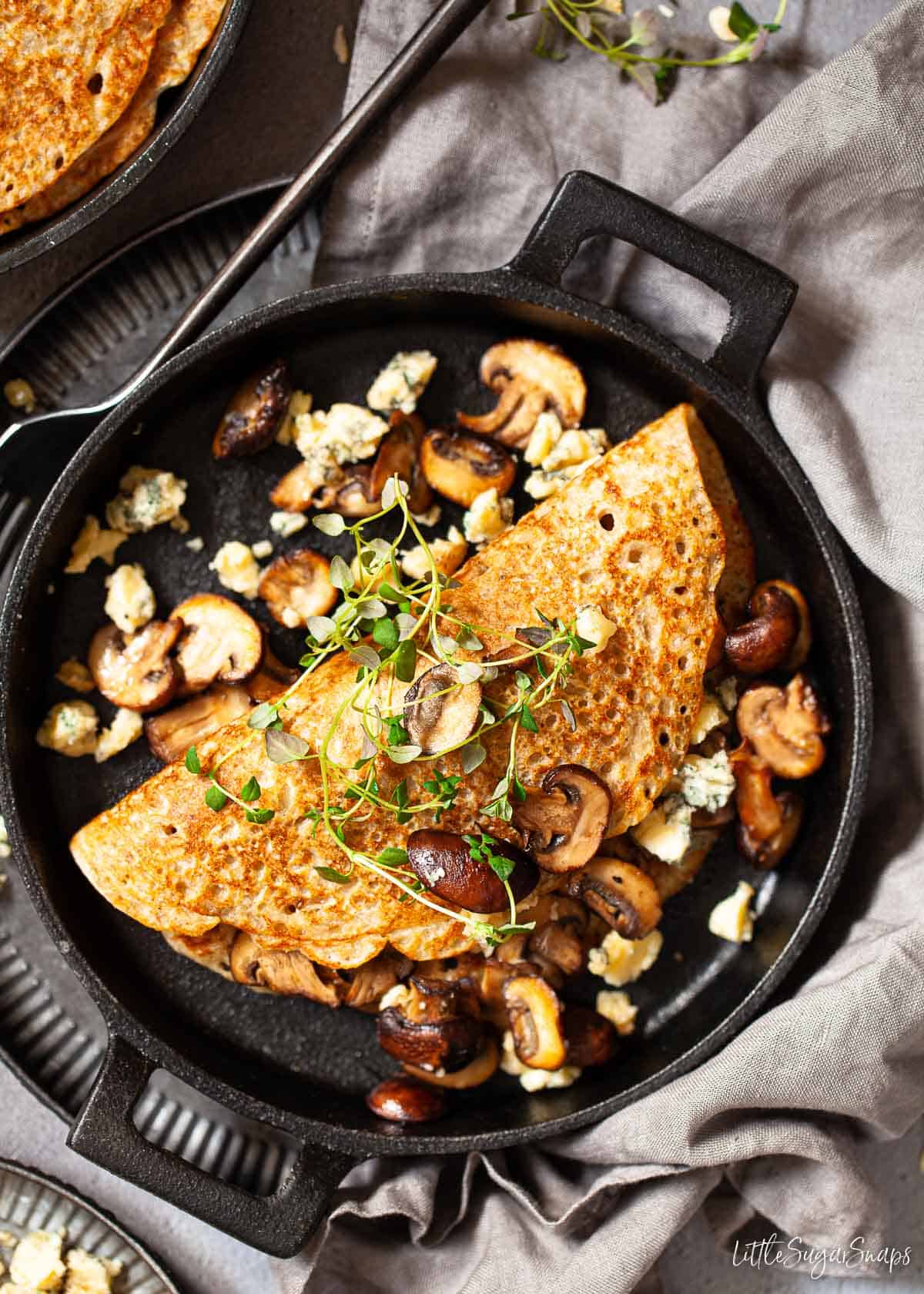
Want to Save This Recipe?
Jump to:
Staffordshire oatcakes are a regional delicacy emanating from the West Midlands. They are a form of pancake made from oatmeal and yeast. Oatcakes are really quite different from typical pancakes and well worth trying out.
Locals swear by eating them with melted cheese and bacon or serving them up alongside a cooked breakfast. Although they are fantastic with savoury fillings, don’t make the mistake of thinking you can’t go down the sweet route as well. I’ve included a handful of topping suggestions to keep both sweet and savoury tooths happy.
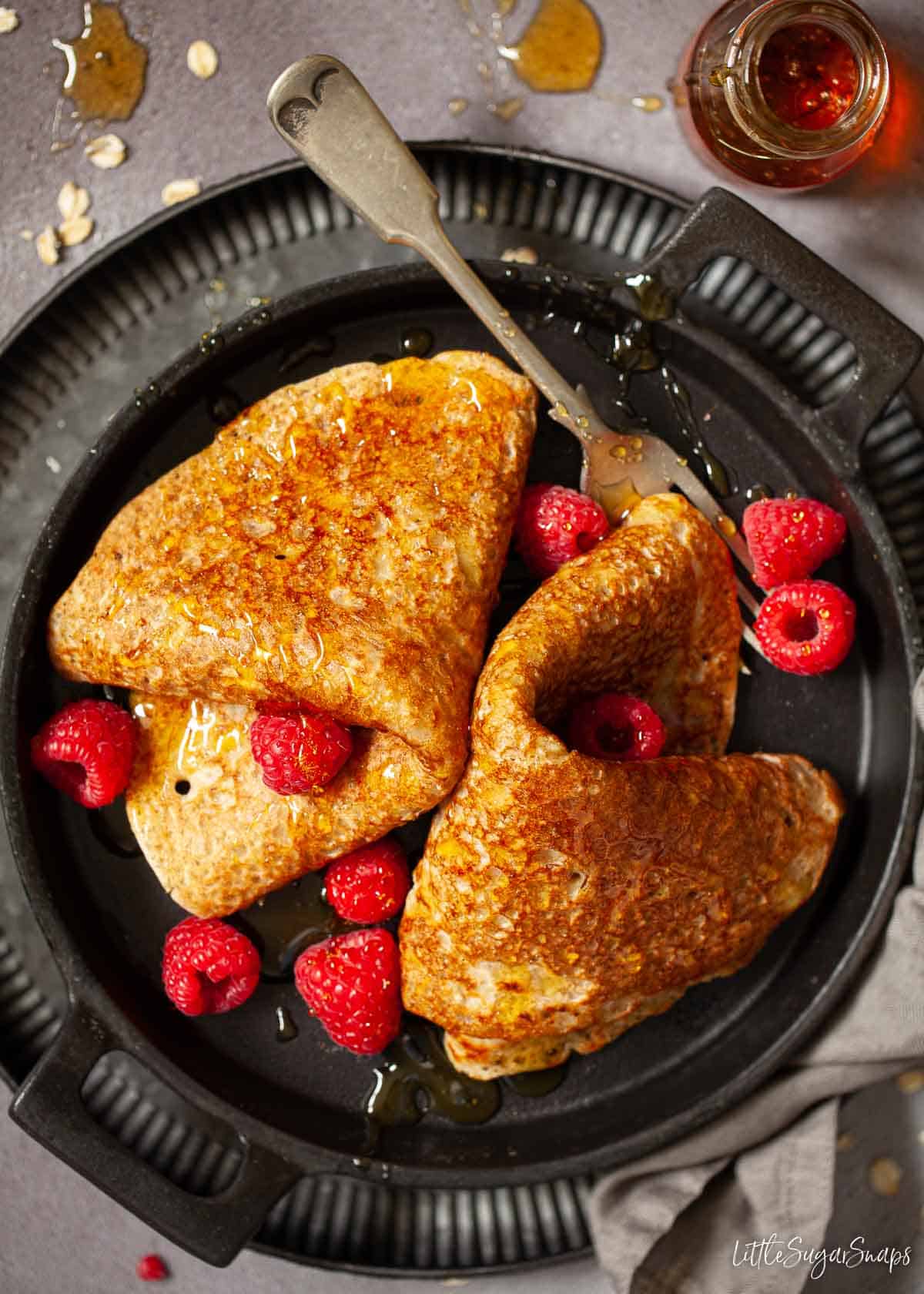
These oatcakes are part of a collection of recipes focusing on food from the East and West Midlands. Also from the West Midlands are pikelets and grey peas and bacon.
What are North Staffordshire Oatcakes?
Staffordshire oatcakes are traditional flatbreads originating from the Stoke-on-Trent area of North Staffordshire. They may look similar to traditional pancakes, but they are made from oatmeal & yeast. They have a much denser structure and more robust flavour than typical English pancakes.
These fried delights have been knocking around since the 18th century when they would have featured regularly in the diets of the people local to the Potteries area (the six towns that form Stoke-on-Trent – the centre of the British pottery industry).
Oatcakes became popular in this area because oats were easier to grow in this region than wheat, so oatmeal was readily available. Until very recently it was common throughout the Potteries for oatcakes to be sold directly from the windows of houses to customers on the street. Sadly, these “hole in the wall” establishments have disappeared over the years.
They are known as North Staffordshire oatcakes to anybody outside of the area, but locals just call them oatcakes. They are almost identical to Derbyshire oatcakes, though typically the Staffordshire oatcake is smaller.
Why these oatcakes are worth making
Whether you prefer to call them Staffordshire oatcakes, Derbyshire oatcakes or just good old oatcakes, you won’t want to miss out on this recipe:
- It’s quick and easy to make
- The addition of oats really makes a difference flavourwise and texturewise
- They are incredibly filling so you won’t need to cook excessive amounts to satisfy tummies
- Oatcakes are well suited to savoury fillings but can handle sweet toppings too
- They can be cooked in advance and reheated when required
Ingredients and equipment notes
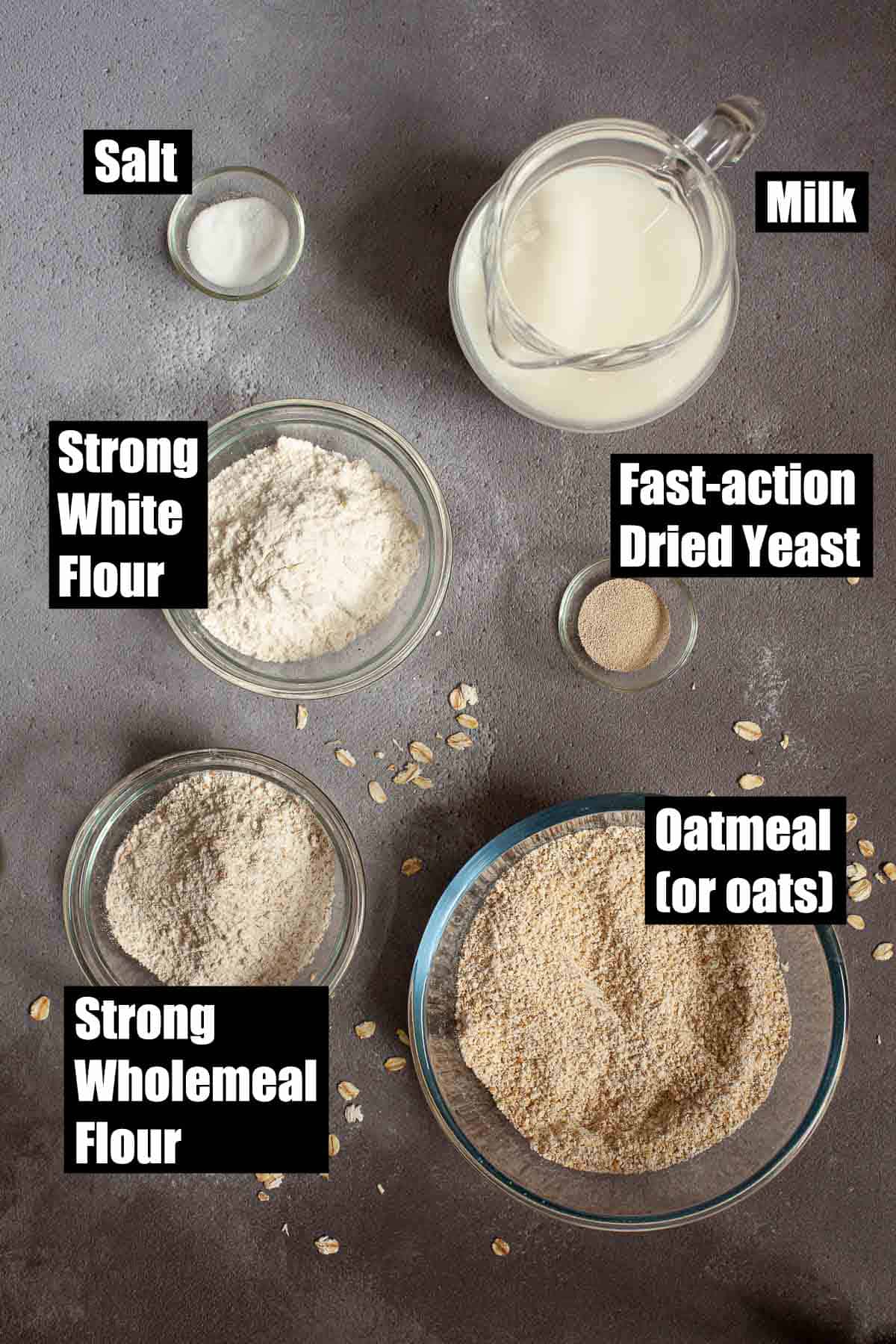
Oatmeal is made from oats that have been ground. It can be coarse, medium or finely ground. For these oatcakes, I recommend fine-medium ground oatmeal. It gives a better texture than medium or coarse oatmeal and produces flatbreads less likely to tear when they are flipped, rolled or folded.
If you cannot find oatmeal in the supermarket don’t despair. It’s easy to make your own at home. Simply put some oats into a blender and pulse until ground to your liking.
Traditionally, Staffordshire oatcakes did not contain milk. The only liquid used would have been water, perhaps because oatcakes were a frugal dish to make. However, the addition of milk (either full or half fat) does enhance the flavour somewhat, so I’ve included it in my recipe. You can increase/ decrease the amount of milk used to suit your own needs, but remember to adjust the water accordingly to keep the volume of liquid in the recipe the same.
Traditional recipes also would not have included flour of any kind. They would have been purely oat-based. However, the addition of strong bread flour does help achieve a superior texture. The resulting oatcakes are more pliable and far less likely to rip and tear when turning them over in the frying pan or when serving up. I’ve used a mix of strong white and strong wholemeal flours to boost the robust flavour of these flatbreads but you could just use one or the other.
This recipe produces yeasted oatcakes. It’s the yeast in the batter that is responsible for creating the gorgeous bubbly and lacy appearance of these oat pancakes. I’ve used fast-action dried yeast. It’s really simple to use as it is added straight into the dry ingredients without needing time to bloom first. Please don’t leave the yeast out.
Historically, North Staffordshire oatcakes would have been cooked on a baxton (a baking stone) or griddle on the hearth. However, you’ll be pleased to hear that a frying pan on the hob gives great results too.
Step-by-step instructions
- Boil the kettle 20 minutes before commencing the recipe
- If using oats blitz them in a blender until fine
- Mix all dry ingredients (oatmeal, flours, salt and yeast) together in a bowl
- Pour 250ml (1 cup) water from the kettle into the milk
- Mix the liquid into the dry ingredients to form a batter (don’t worry about a few lumps remaining
- Cover and set aside for 1-2 hours – it’s ready when it turns bubbly
- Heat a frying pan and drizzle in ½ teaspoon flavourless oil
- Stir the batter then pour 100ml into the frying pan. Quickly tilt the pan to spread the batter out. Let cook, undisturbed, for 2 minutes
- Flip it over using a spatula and cook the reverse for a further 2 minutes
- Either serve immediately or keep warm whilst the rest of the oatcakes are cooked
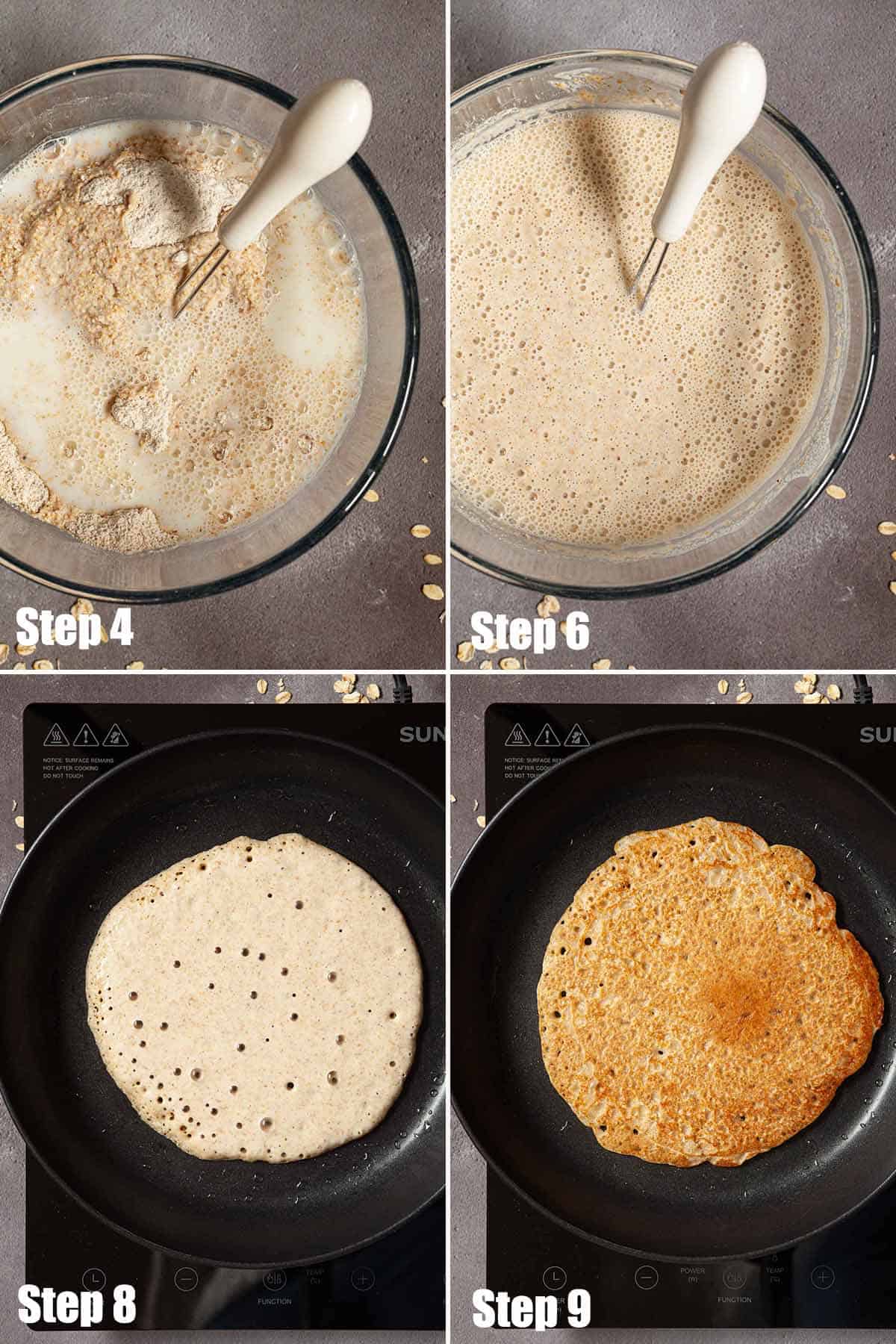
How to keep Staffordshire oatcakes warm
Preheat the oven to 110C/ 125F/ GM ¼ with a large ovenproof plate inside. Once the first oatcake is cooked lay it on the warmed plate and cover loosely with foil. Put back into the oven. Keep adding to the plate each time a fresh oatcake is cooked – a layer of baking parchment between each oatcake will prevent them from sticking to each other.
Expert Tips
- Mix the batter until it is relatively smooth, but don’t worry if a few lumps remain. These will break down as the batter rests
- Using hot water helps speed up the activation of the yeast. If cooler water is used then the batter will need to rest for 3-4 hours
- The batter can be mixed and stored in the fridge overnight
- Not sure if your batter is ready? Give it a quick stir. If lots of bubbles appear then it is ready
- Get your frying pan nicely hot. If it is too cool then the pancakes will be rubbery, but if too hot they will burn. Drop a small amount of batter into the pan to test the temperature out – it should sizzle nicely
- Don’t add too much oil – just a small amount per oatcake is sufficient
- Get the batter to spread to around 20cm (8-inches). This recipe makes 6 North Staffordshire oatcakes
- To make the larger Derbyshire oatcakes, use 150ml batter per pancake and spread it to around 25-30cm. This recipe makes 4
- Use a spatula to turn them over in the pan. Oatcakes are more fragile than typical pancakes so are not easy to flip in the air
- Think about your toppings before cooking commences and get anything that can be prepared in advance done so that your oatcakes can be enjoyed freshly cooked
Frequently asked questions
A plain oatcake is very healthy. It contains no sugar and only a small amount of fat. Thanks to oatmeal, it also contains a good amount of fibre.
However, the toppings that are often piled onto each oatcake can mean that much higher amounts of fat or sugar come into play. So if you are looking for a healthy lunch or snack, chose your fillings wisely.
Yes, they can be reheated. and there are several ways to do this. Either reheat in a frying pan, cooking for 1-2 minutes. Alternatively, microwave for around 15 seconds.
By all means, these oatcakes can be made vegan. It’s simply a case of replacing dairy-based milk with a suitable vegan alternative. Oat milk would be the best bet, to tie in with the oatmeal.
I would not recommend using coconut milk.
This recipe for North Staffordshire oatcakes is not gluten-free because it does contain flour alongside the oatmeal. The flour helps give the oatcakes a little elasticity, making them easier to flip over and roll without breaking up.
To adapt the recipe to be gluten-free, suitable gluten-free flours would need to be used in place of the strong wholemeal and strong white flours included in this recipe.
Serving suggestions
North Staffordshire oatcakes are versatile, although they are particularly well suited to savoury fillings due to their full-bodied oaty flavour. Try the following suggestions out:
Savoury fillings
- Go classic the North Staffordshire way by serving them with melted cheddar cheese and bacon
- Load an oatcake up with goodies from a typical cooked breakfast – sausages, baked beans, fried eggs and tomatoes are all regular favourites amongst the Staffordshire locals
- Or add an East Midlands twist with mushrooms and Blue Stilton cheese. Alternatively, pick Buxton Blue cheese to tie in with the theme if you prefer to call these Derbyshire oatcakes
- Try rolling one up with cheddar cheese and chutney or pickle for lunch
- Venture down the pizza route by adding tomato sauce, pepperoni and cheese
- Up your game and try them with buttered leeks, salmon and soured cream
- Go ultra simple and let some butter melt on top before devouring
Sweet toppings
- Try a generous drizzle of golden syrup plus some berries of your choice
- A little splodge of jam works wonders too, especially when paired with whipped cream or, even better, clotted cream (oh how my heart skips a beat at the thought of this) If serving with cream, I highly recommend cherry jam.
- Or top with Greek yoghurt, fruit, nuts and honey for a substantial sweet breakfast
- Alternatively, turn them into a full blown dessert by topping with poached fruit and custard
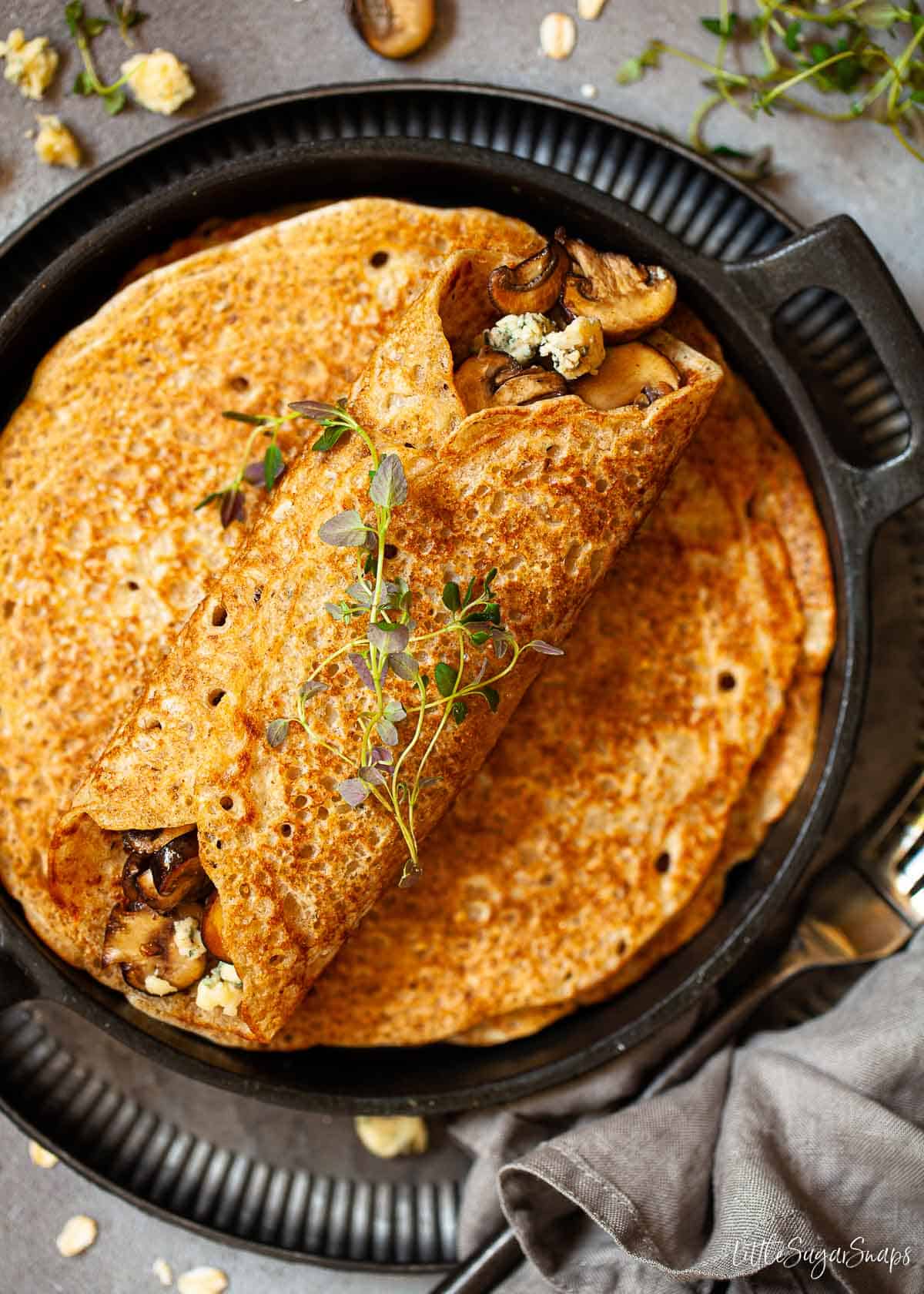
Alternative tempting pancake recipes
Have you made this Staffordshire oatcakes recipe? Let me know how you got along by leaving a comment or rating below. Show me how you topped yours on Instagram by tagging me @jane_littlesugarsnaps.
Stay in touch: sign up to receive LittleSugarSnaps newsletters to hear when new recipes are published. Or follow me on social media:
📖 Recipe
Want to Save This Recipe?
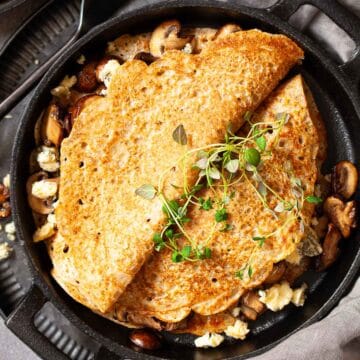
Staffordshire Oatcakes
Ingredients
- 150 g Oatmeal – finely ground or whole oats for grinding in a blender)
- 60 g Strong white flour
- 60 g Strong wholemeal flour
- ⅜ teaspoon Salt
- ¾ teaspoon Fast-action dried yeast
- 250 ml Milk whole or semi-skimmed
- 250 ml Water warm
- Flavourless oil for frying e.g. vegetable oil
Instructions
- Boil the kettle 20 minutes before commencing the recipe. This will ensure the water is a suitable temperature
- If using oats blitz them in a blender until fine
- Mix all dry ingredients (oatmeal, flours, salt and yeast) together in a bowl
- Pour 250ml (1 cup) water from the kettle into the milk
- Mix the liquid into the dry ingredients to form a batter. Don't worry about a few lumps remaining, these will break down as the batter rests
- Cover and set aside for 1-2 hours – it's ready when it turns bubbly. If you don't see bubbles on the surface, give the batter a quick stir and bubbles will appear if the batter is ready. If not, leave a little longer
- Heat a frying pan and drizzle in ½ teaspoon flavourless oil
- Give the batter a quick stir then pour 100ml into the frying pan. Quickly tilt the pan to spread the batter out. Let cook, undisturbed, for 2 minutes
- Flip it over using a spatula and cook the reverse for a further 2 minutes
- Either serve immediately or keep warm whilst the rest of the oatcakes are cooked
Notes
- Mix the batter until it is relatively smooth, but don’t worry if a few lumps remain. These will break down as the batter rests
- Using hot water helps speed up the activation of the yeast. If cooler water is used then the batter will need to rest for 3-4 hours
- The batter can be mixed and stored in the fridge overnight
- Not sure if your batter is ready? Give it a quick stir. If lots of bubbles appear then it is ready
- Get your frying pan nicely hot. If it is too cool then the pancakes will be rubbery, but if too hot they will burn. Drop a small amount of batter into the pan to test the temperature out – it should sizzle nicely
- Don’t add too much oil – just a small amount per oatcake is sufficient
- Get the batter to spread to around 20cm (8-inches). This recipe makes 6 North Staffordshire oatcakes
- To make the larger Derbyshire oatcakes, use 150ml batter per pancake and spread it to around 25-30cm. This recipe makes 4
- Use a spatula to turn them over in the pan. Oatcakes are more fragile than typical pancakes so are not easy to flip in the air

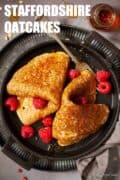
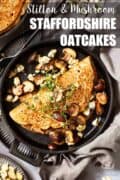
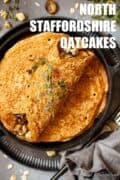
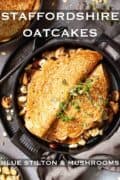
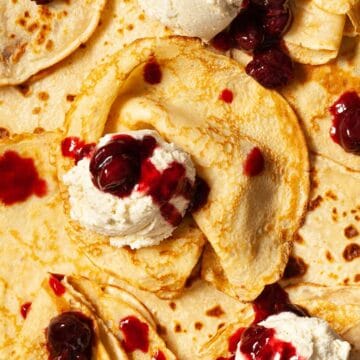
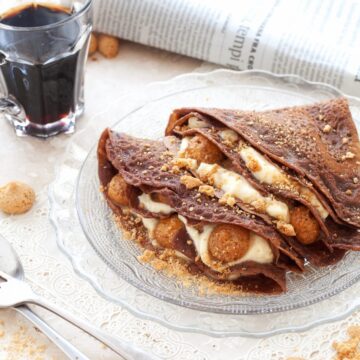
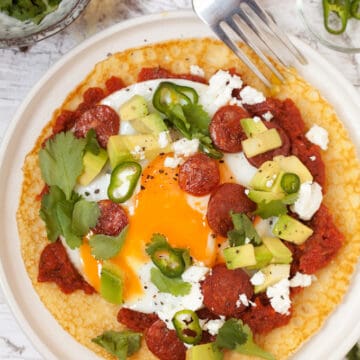
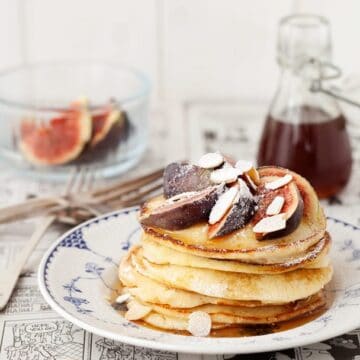
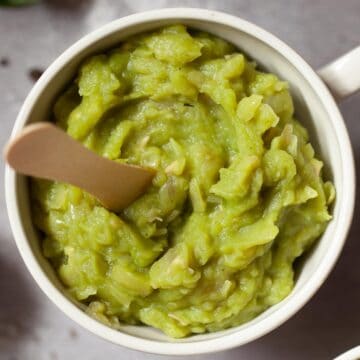
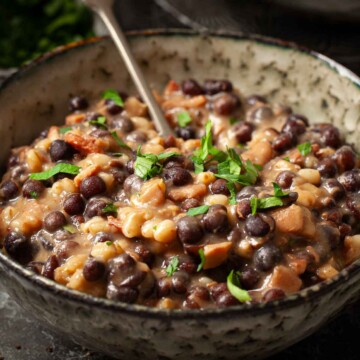
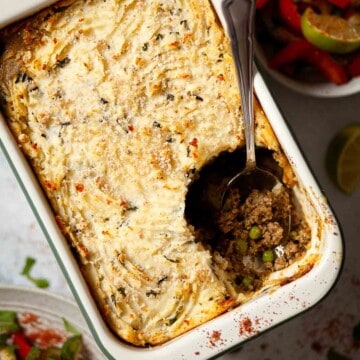
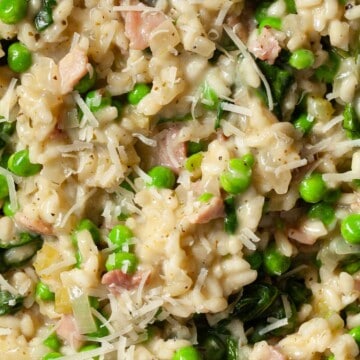
Mari
I made them for the second time with a bit more liquid and slightly less finely ground oats and they were PERFECT. My Staffs ex-pat was ecstatic and I was pretty pleased myself. Thanks!
Jane Coupland
Hey Mari, thanks for the lovely review – what did you top them with?
Mari Reive
These were quite tasty and my Staffordshire ex-pat boyfriend was ecstatic to have them. But I had to ad more liquid than called for because the mix was too thick for the cooked texture they should be. They wouldn’t swirl well in the pan. I certainly didn’t expect it to behave exactly like regular pancakes because of the oats. Any suggestions? I’ll definitely give them another go. When I lived in the UK, I never came across them or even heard of them. They must be very localised.
Jane Coupland
Hi Mari, I’m so pleased that you enjoyed these. Regarding the thickness of the batter, they don’t spread as far a crepe style pancakes do, but you should feel free to add a splash more liquid until your batter is the right texture to spread when the pan is tilted. They are, by nature of the ingredeints, different (thicker and more filling) than typical British pancakes.Some flour absorbs more liquid than others (I have no idea why), but it’s an easy fix by doing as you did previously – adding a little more liquid if your batter comes out too thick to spread in the pan at all. I hope this information helps.
Linda butler
Now live Australia and missed my oatcakes thank you for your recipe. 😁✌️🏡
Jane Coupland
Hi Linda, then I’m so glad you found them. Have you spotted my collection of Midlands recipes? Might just bridge the gap between Britain and Aus further for you 😉